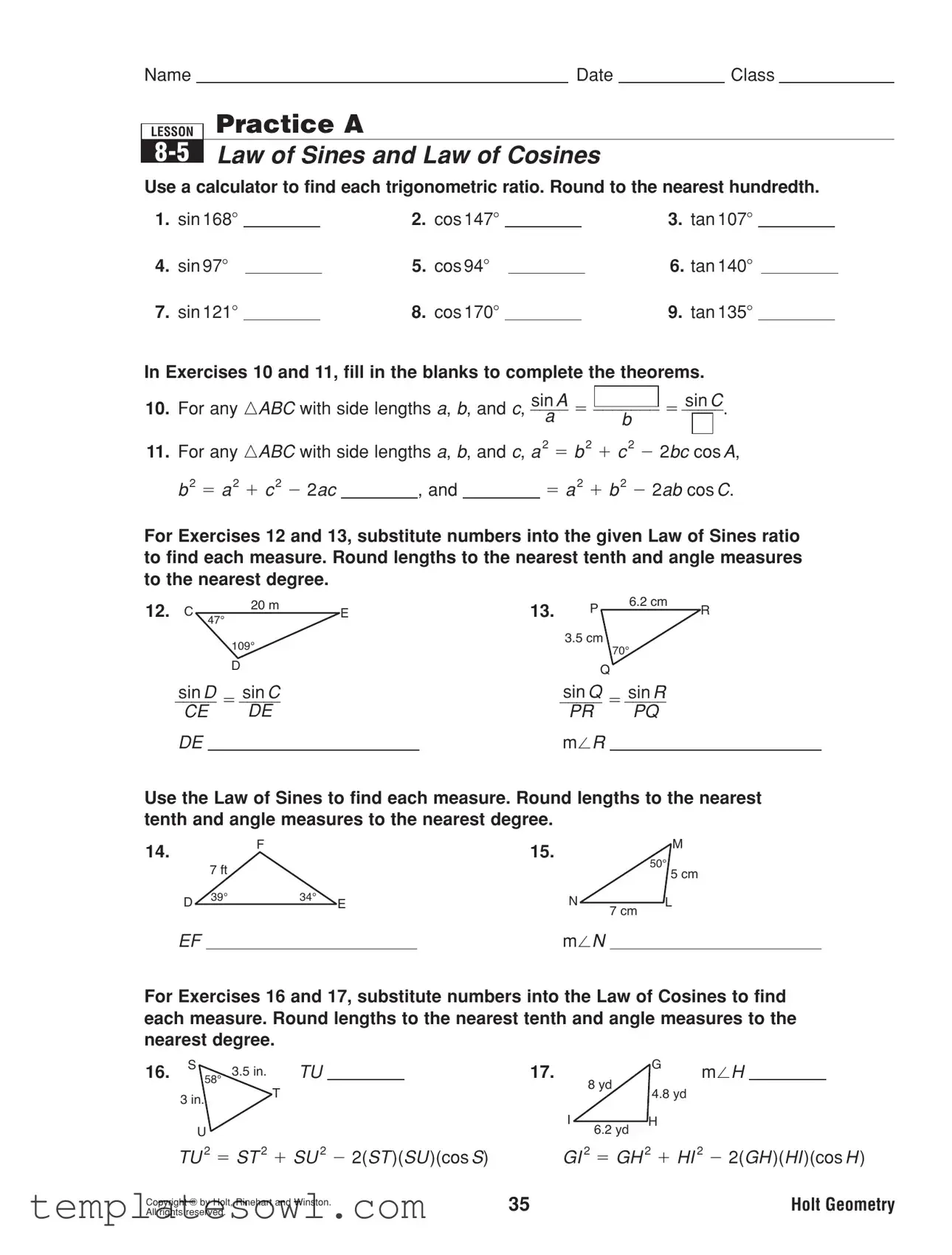What is the Pearson 8 5 G form?
The Pearson 8 5 G form is a geometry practice worksheet focusing on the Law of Sines and the Law of Cosines. It includes exercises that ask students to calculate trigonometric ratios, fill in the blank theorems related to these laws, and apply them to find unknown measures in triangles. Rounding answers to specific decimal places is often required.
What topics are covered in the Pearson 8 5 G form?
This form primarily covers trigonometry within the context of triangles. Key topics include finding the sine, cosine, and tangent of angles, applying the Law of Sines and the Law of Cosines to determine side lengths and angles, and rounding results as per instructions. It provides a solid practice base for students learning these concepts.
How should students submit their answers on the Pearson 8 5 G form?
Students should record their answers clearly in the designated spaces on the form. They need to ensure that all calculations are neatly presented and that rounding is done according to the given requirements, typically rounding trigonometric ratios to the nearest hundredth and lengths or angle measures to the nearest tenth or degree.
What tools do students need to complete the Pearson 8 5 G form?
A scientific calculator is necessary for students to compute trigonometric ratios and to apply the Law of Sines and Law of Cosines effectively. Students should also have access to pencil and paper for any additional calculations or notes they might want to make while working through the exercises.
Is there a specific method to solve the problems related to the Law of Sines and Law of Cosines?
Yes, while using the Law of Sines, students can set up a proportion based on the sides and angles of the triangle. For the Law of Cosines, they'll typically rearrange the formula to solve for a specific side or angle. Working methodically through each problem, applying the correct formulas, and ensuring accuracy in calculations is essential for success.
What should students do if they struggle with the concepts in the Pearson 8 5 G form?
If students find themselves struggling, they should consider reaching out for additional help. This could be from a teacher, a tutor, or study groups with classmates. Reviewing textbook materials and using online resources like tutorials or videos can also provide greater clarity on these mathematical concepts, helping to reinforce their understanding.






